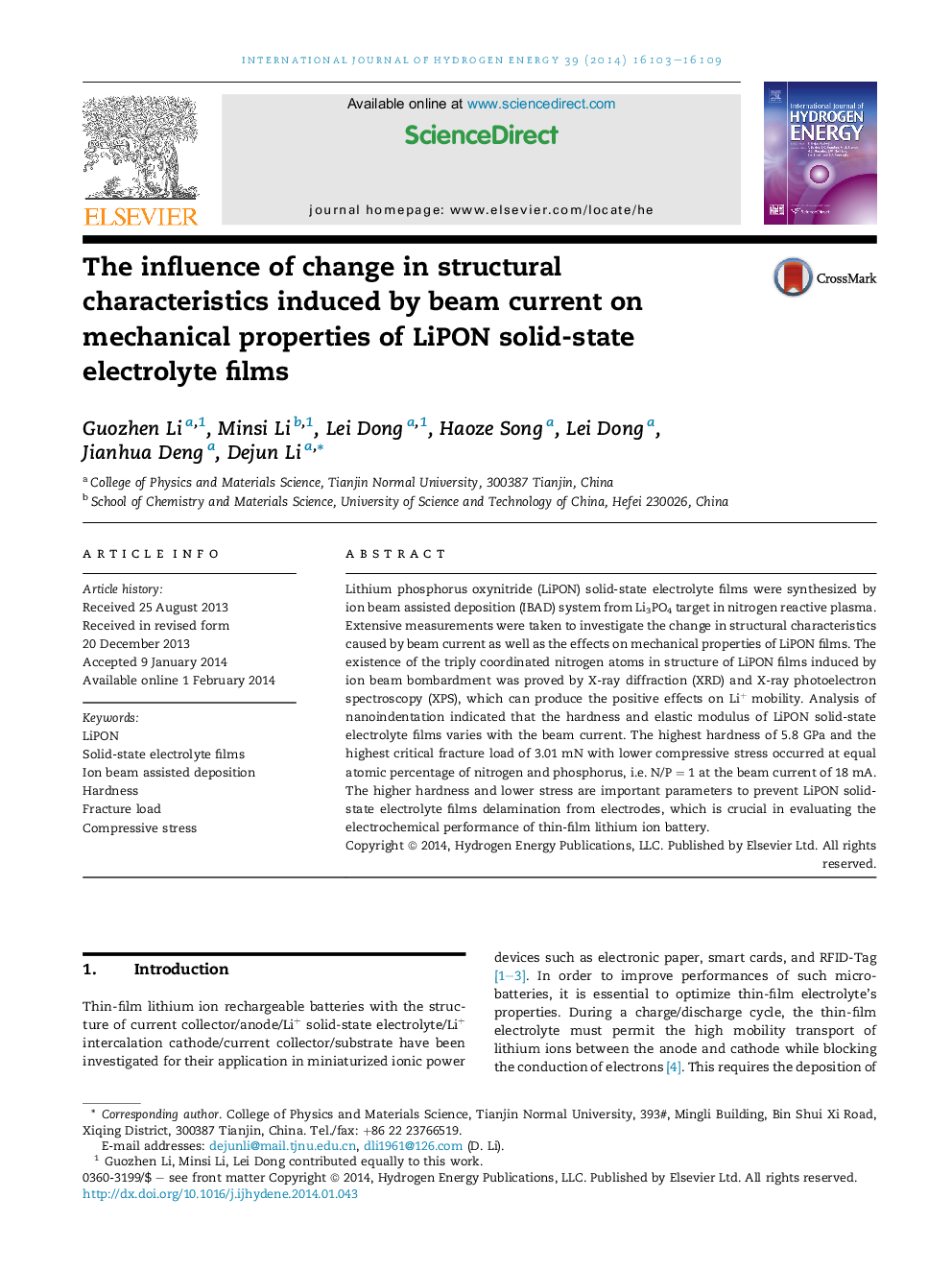| Article ID | Journal | Published Year | Pages | File Type |
|---|---|---|---|---|
| 1272459 | International Journal of Hydrogen Energy | 2014 | 7 Pages |
•LiPON solid-state electrolyte films are synthesized by IBAD.•18 mA contributes the highest hardness, lower stress and higher critical fracture.•18 mA beam current leads to same atomic percentage of N and P elements.•18 mA also contributes the an increase of Li-ion conductivities.•Desirable mechanical properties prevent LiPON films delamination from electrodes.
Lithium phosphorus oxynitride (LiPON) solid-state electrolyte films were synthesized by ion beam assisted deposition (IBAD) system from Li3PO4 target in nitrogen reactive plasma. Extensive measurements were taken to investigate the change in structural characteristics caused by beam current as well as the effects on mechanical properties of LiPON films. The existence of the triply coordinated nitrogen atoms in structure of LiPON films induced by ion beam bombardment was proved by X-ray diffraction (XRD) and X-ray photoelectron spectroscopy (XPS), which can produce the positive effects on Li+ mobility. Analysis of nanoindentation indicated that the hardness and elastic modulus of LiPON solid-state electrolyte films varies with the beam current. The highest hardness of 5.8 GPa and the highest critical fracture load of 3.01 mN with lower compressive stress occurred at equal atomic percentage of nitrogen and phosphorus, i.e. N/P = 1 at the beam current of 18 mA. The higher hardness and lower stress are important parameters to prevent LiPON solid-state electrolyte films delamination from electrodes, which is crucial in evaluating the electrochemical performance of thin-film lithium ion battery.
